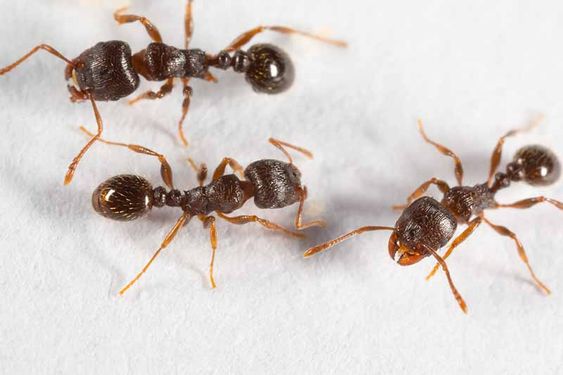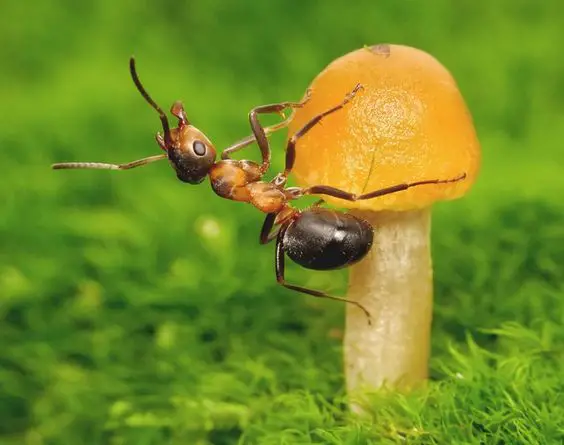When you think of Maine, you might envision its breathtaking landscapes and savory lobster dishes, but don’t overlook the intriguing world of ants in Maine.
But did you ever wonder about the tiny ants that live there? Maine is home to a variety of ant species, and these small insects have a big impact on the state’s environment making ‘Ants in Maine’ a unique ecological study.
There are over 43 different species of ants found in Maine, ranging in size from tiny sugar ants to large carpenter ants. While most ants are harmless, some can be pests or even bite.
Ants in Maine are little creatures may not be as fascinating as big city life, but they have a unique role to play in the Pine Tree State.
In this article, we’ll explore the world of ants in Maine, from their different types to how they affect the local ecosystem.
Types of Ants in Maine
Maine is home to several ant species, each with its own distinct characteristics.
These tiny creatures come in a variety of sizes and colors, making them intriguing subjects for entomology enthusiasts and casual observers alike.
Black Carpenter Ant (Camponotus pennsylvanicus)
Black Carpenter Ants are known for nesting in decaying wood, such as tree stumps and rotting logs.
- Size & Color: Black carpenter ants in Maine are large, black ants that can be up to 1/2 inch long. They have a glossy body and large mandibles.
- Habitat: Black carpenter ants prefer to nest in moist, decaying wood, but they can also nest in sound wood in homes and other buildings.
- Biodiversity: Black carpenter ants are an important part of the ecosystem, helping to break down decaying wood. However, they can also be a nuisance pest when they nest in homes and other buildings.
- Complications: Black carpenter ants can cause significant damage to wood structures by excavating tunnels and galleries.
- Impact: Black carpenter ants can have a significant impact on homeowners and businesses in Maine. The damage they cause can be costly to repair and can reduce the value of a property.
Odorous House Ant (Tapinoma sessile)
Odorous House Ants get their name from the foul odor they emit when crushed.
- Size & Color: Odorous house ants in Maine are small, black or dark brown ants that are about 1/8 inch long. They have a characteristic coconut-like odor when crushed.
- Habitat: Odorous house ants prefer to nest in warm, moist areas, such as under kitchen sinks, behind appliances, and in bathrooms. They are often attracted to food and sweet liquids.
- Biodiversity: Odorous house ants are not a native species to Maine. They were introduced from Europe and have become a common nuisance pest.
- Complications: Odorous house ants can contaminate food and surfaces with their saliva and feces. They can also spread bacteria and other pathogens.
- Impact: Odorous house ants can have a negative impact on homeowners and businesses in Maine. They can contaminate food and surfaces, posing a health risk. They can also damage electrical wiring and other infrastructure.
Little Black Ant (Monomorium minimum)
Little Black Ants are highly adaptable and can be found in diverse environments. They tend to form small, inconspicuous colonies.
- Size & Color: Little black ants in Maine are typically about 1/16 inch to 1/8 inch long and are black or dark brown in color. Some species may have a slightly metallic sheen.
- Habitat: Little black ants in Maine can be found in a variety of habitats, including forests, meadows, and urban areas. They often nest in soil, under rocks or logs, or in decaying wood.
- Biodiversity: There are many different species of little black ants in Maine, and each species has its own unique role in the ecosystem.
- Complications: Little black ants can become a nuisance pest when they enter homes and businesses in search of food and water. They can also contaminate food and surfaces with their saliva and feces.
- Impact: Little black ants can have a negative impact on homeowners and businesses in Maine if they become a nuisance or contaminate food and surfaces. However, they generally do not cause significant damage.
Acrobat Ant (Crematogaster spp.)
Acrobat Ants are often found in rotting wood, decaying tree branches, or under stones.
- Size & Color: Acrobat ants in Maine are small, black ants that are about 1/16 inch long. They have a distinctive heart-shaped abdomen.
- Habitat: Acrobat ants prefer to nest in moist, shady areas, such as under rocks, logs, and in leaf litter. They are often found near water sources.
- Biodiversity: Acrobat ants are a native species to Maine. They play an important role in the ecosystem by helping to break down dead insects and other organic matter.
- Complications: Acrobat ants are not typically considered to be a pest ant, but they can become a nuisance if they enter homes or businesses in search of food and water. They can also contaminate food and surfaces with their saliva and feces.
- Impact: Acrobat ants can have a negative impact on homeowners and businesses in Maine if they become a nuisance or contaminate food and surfaces. However, they generally do not cause significant damage.
Pharaoh Ant (Monomorium pharaonis)
Pharaoh Ants are notorious for being indoor pests, infesting kitchens and bathrooms.
- Size & Color: Pharaoh ants in Maine are small, yellow to reddish brown ants that are about 1/16 inch long. The queens are slightly darker in color.
- Habitat: Pharaoh ants prefer to nest in warm, humid environments, such as kitchens, bathrooms, and hospitals. They are often found near food and water sources.
- Biodiversity: Pharaoh ants are an invasive species in Maine. They are not native to the state and can outcompete native ant species.
- Complications: Pharaoh ants can be a nuisance pest in homes and businesses. They can contaminate food and surfaces with their saliva and feces. They can also spread bacteria and other pathogens.
- Impact: Pharaoh ants can have a negative impact on homeowners and businesses in Maine. They can contaminate food and surfaces, posing a health risk. They can also damage electrical wiring and other infrastructure.
Pavement Ant (Tetramorium caespitum)

Pavement ants in Maine are often found near sidewalks, driveways, and buildings, hence their name.
- Size & Color: Pavement ants in Maine are small, dark brown to black ants that are about 1/8 inch long.
- Habitat: Pavement ants prefer to nest in cracks and crevices in pavement, concrete, and other hard surfaces. They are also often found near food sources, such as garbage cans and outdoor eating areas.
- Biodiversity: Pavement ants are a native species to Maine. They play an important role in the ecosystem by helping to break down food and other organic matter.
- Complications: Pavement ants can be a nuisance pest when they enter homes and businesses in search of food and water. They can also contaminate food and surfaces with their saliva and feces.
- Impact: Pavement ants can have a negative impact on homeowners and businesses in Maine if they become a nuisance or contaminate food and surfaces. However, they generally do not cause significant damage.
Red Imported Fire Ant (Solenopsis invicta)
Red Imported Fire Ants are invasive and aggressive. They are infamous for their painful stings, which can cause allergic reactions in some individuals.
- Size & Color: Red imported fire ants in Maine are small to medium in size, ranging from 1/8 to 1/4 inches in length. They are reddish-brown to bright red in color.
- Habitat: Red imported fire ants prefer to nest in open, sunny areas, such as fields, meadows, and lawns.
- Biodiversity: Red imported fire ants are an invasive species in Maine. They are not native to the state and can outcompete native ant species. They can also prey on native insects and other invertebrates.
- Complications: Red imported fire ants can be a nuisance pest and a health hazard. Their stings are painful and can cause allergic reactions in some people.
- Impact: Red imported fire ants can have a negative impact on homeowners, businesses, and the environment in Maine. They can cause painful stings and allergic reactions, damage infrastructure, and outcompete native ant species.
Carpenter ants in Maine
Carpenter ants are the largest ants in Maine. They are attracted to moist wood, so it is important to keep your home and yard free of leaks and water damage.
- Size & Color: Red carpenter ants in Maine are large, black ants that can be up to 1/2 inch long. They have a reddish-brown thorax and a black abdomen.
- Habitat: Red carpenter ants prefer to nest in moist, decaying wood, but they can also nest in sound wood in homes and other buildings.
- Biodiversity: Red carpenter ants are an important part of the ecosystem, helping to break down decaying wood. However, they can also be a nuisance pest when they nest in homes and other buildings.
- Complications: Red carpenter ants can cause significant damage to wood structures by excavating tunnels and galleries. They can also weaken wood structures, making them more susceptible to other damage.
- Impact: Red carpenter ants can have a significant impact on homeowners and businesses in Maine. The damage they cause can be costly to repair and can reduce the value of a property.
Conclusion of Ants in Maine
Ants are a common part of the Maine environment. Most ants are harmless, but some can be pests or even bite.
So, there you have it – Maine’s very own cast of tiny but mighty actors in the grand play of life. Those ants, whether they’re the hefty Black Carpenter Ants or the pint-sized Little Black Ants, are making things happen.
They spread seeds, help rotting stuff break down, and keep those pesky pests in check. They might not be the stars of the show, but they’re essential backstage crew members.
So, next time you’re out in the wilds of Maine or chilling in your cozy home, take a moment to give a nod to these unsung heroes, showing that even the smallest critters have a big part in our amazing ecosystem.



